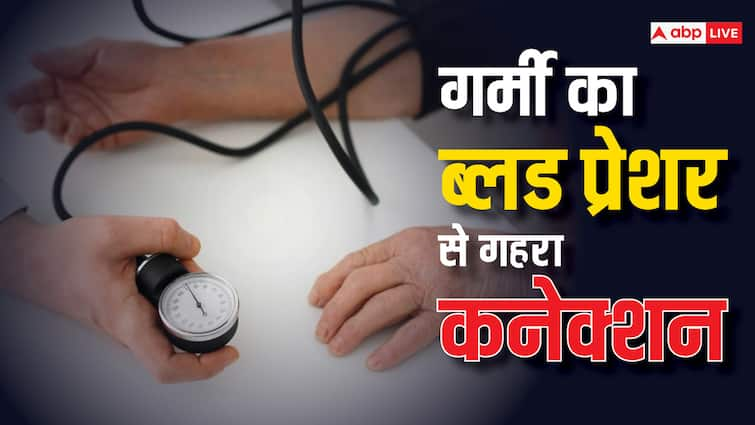Blood pressure in summer: The risk of disease increases when the weather changes. Problems can increase especially during the summer season. Health experts say our health But The weather has a lot of influence. Many diseases can thus increase.
It’s extremely hot these days. The temperature in many places is around 45 degrees. Which can have the greatest impact on blood pressure patients. Their blood pressure may decrease. In this season, there is a risk of a sudden drop in blood pressure. Know how summer weather can affect blood pressure…
Effect of heat on BP patients
Health experts say there is a risk of high blood pressure in winter, while blood pressure can drop in summer. This is because when the temperature decreases, blood vessels shrink and blood pressure begins to increase. Whereas in summer, due to high temperature, blood vessels start to dilate and blood pressure starts to decrease. Therefore, BP patients should be especially careful in summer. They should monitor blood pressure regularly.
Reason for low blood pressure in summer
Doctors say many other factors can cause low blood pressure in summer. Dehydration and eating less salt can also lower blood pressure. In summer, due to excessive sweating, there is a lack of water in the body. In such a situation, if one does not drink enough water, dehydration problem may arise. This can lead to a drop in blood pressure.
Due to excessive sweating in this season, salt begins to decrease in the body, which can cause low blood pressure. Because sodium, which maintains blood pressure, is found in salt, the deficiency of which can worsen problems.
What should blood pressure be in summer?
According to health experts, the normal blood pressure of an adult should be 120/80 mm Hg. This means that a systolic pressure of 120 or less and a diastolic pressure of 80 or less are considered normal. When the systolic pressure is 130 to 139 mm Hg, it is considered stage 1 hypertension, while the diastolic pressure is 80 to 89 mm Hg. It is considered stage 1 hypertension. When the systolic pressure is of 140 mm Hg and the diastolic pressure of 90 mm Hg or more, stage 2 hypertension and blood pressure above this figure are called hypertensive crisis.
Disclaimer: Some information given in news is based on media reports. Before implementing any suggestion, you should consult the relevant expert.
Check out the health tools below –
Calculate your body mass index (BMI)
